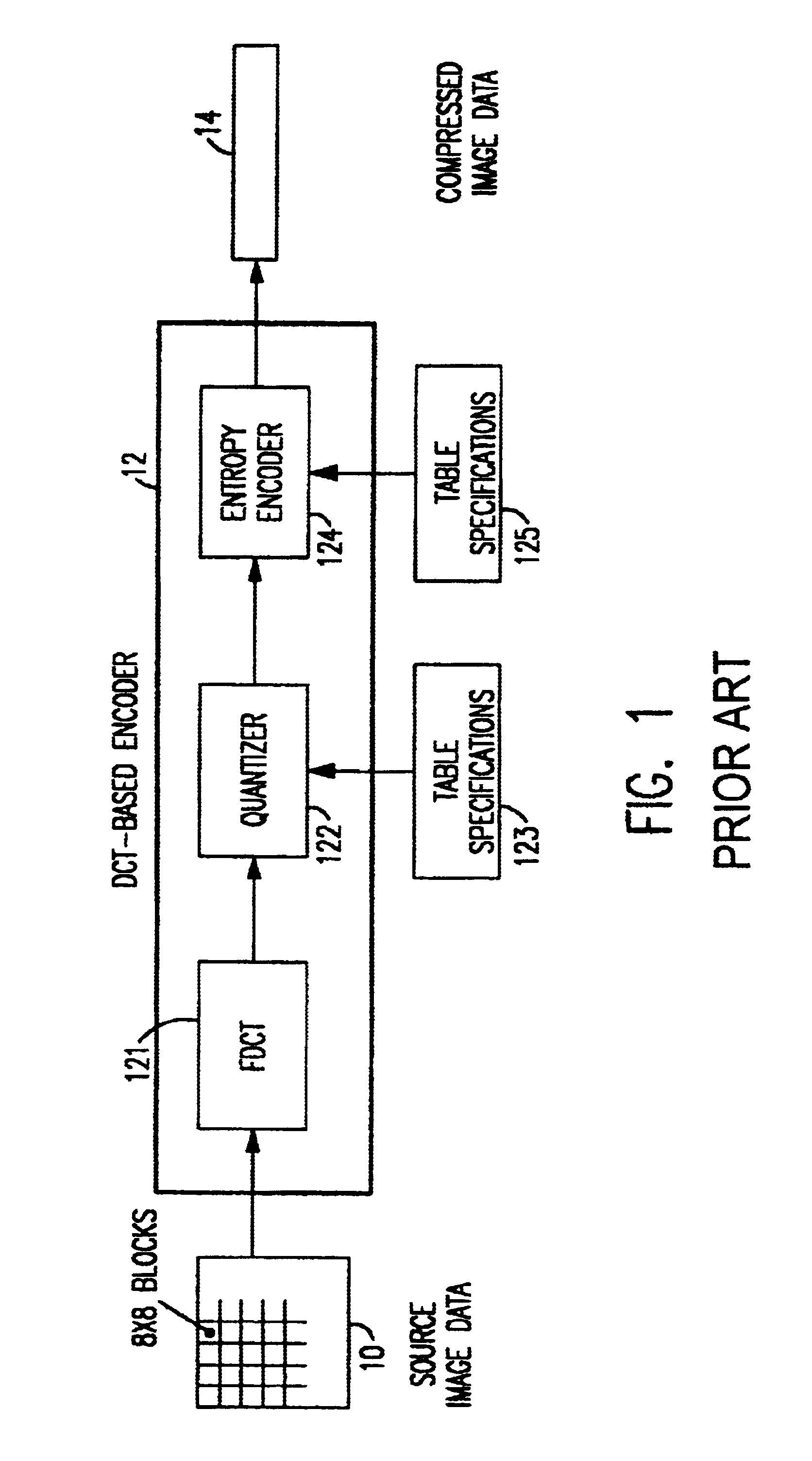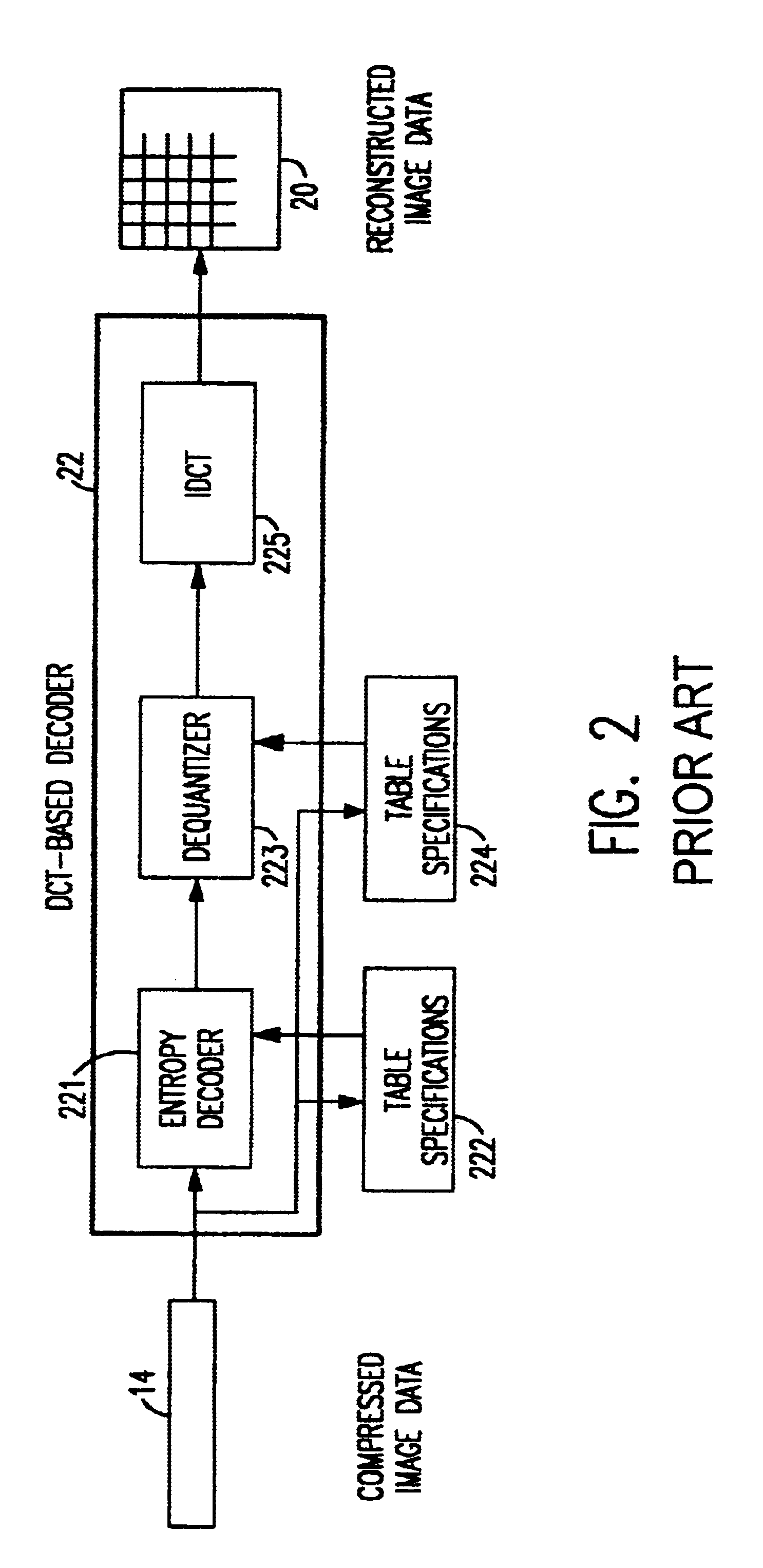JPEG packed block structure
a packed block and jpeg technology, applied in the field of color image compression, can solve the problem of extremely large data in a digital imag
- Summary
- Abstract
- Description
- Claims
- Application Information
AI Technical Summary
Benefits of technology
Problems solved by technology
Method used
Image
Examples
Embodiment Construction
Referring now to the drawings, and more particularly to FIG. 1, there is shown a simplified block diagram of a DCT-based encoder. A source image 10 sampled data in 8.times.8 blocks are input to the encoder 12. Each 8.times.8 block is transformed by the FDCT 121 into a set of 64 values, referred to as the DCT coefficients. One of these values is referred to as the DC coefficient, and the other 63 values are referred to as AC coefficients. Each of the 64 coefficients are then quantized by quantizer 122 using one of 64 corresponding values from a quantization table 123. After quantization, the DC coefficient and the 63 AC coefficients are prepared for entropy encoding. The previous quantized DC coefficient is preferably used to predict the current DC coefficient and the difference is encoded. The 63 AC coefficients, however, are not differentially encoded but, rather, are converted into a zig-zag sequence that approximates increasing spatial frequency of the corresponding DCT coefficie...
PUM
 Login to View More
Login to View More Abstract
Description
Claims
Application Information
 Login to View More
Login to View More - R&D
- Intellectual Property
- Life Sciences
- Materials
- Tech Scout
- Unparalleled Data Quality
- Higher Quality Content
- 60% Fewer Hallucinations
Browse by: Latest US Patents, China's latest patents, Technical Efficacy Thesaurus, Application Domain, Technology Topic, Popular Technical Reports.
© 2025 PatSnap. All rights reserved.Legal|Privacy policy|Modern Slavery Act Transparency Statement|Sitemap|About US| Contact US: help@patsnap.com



